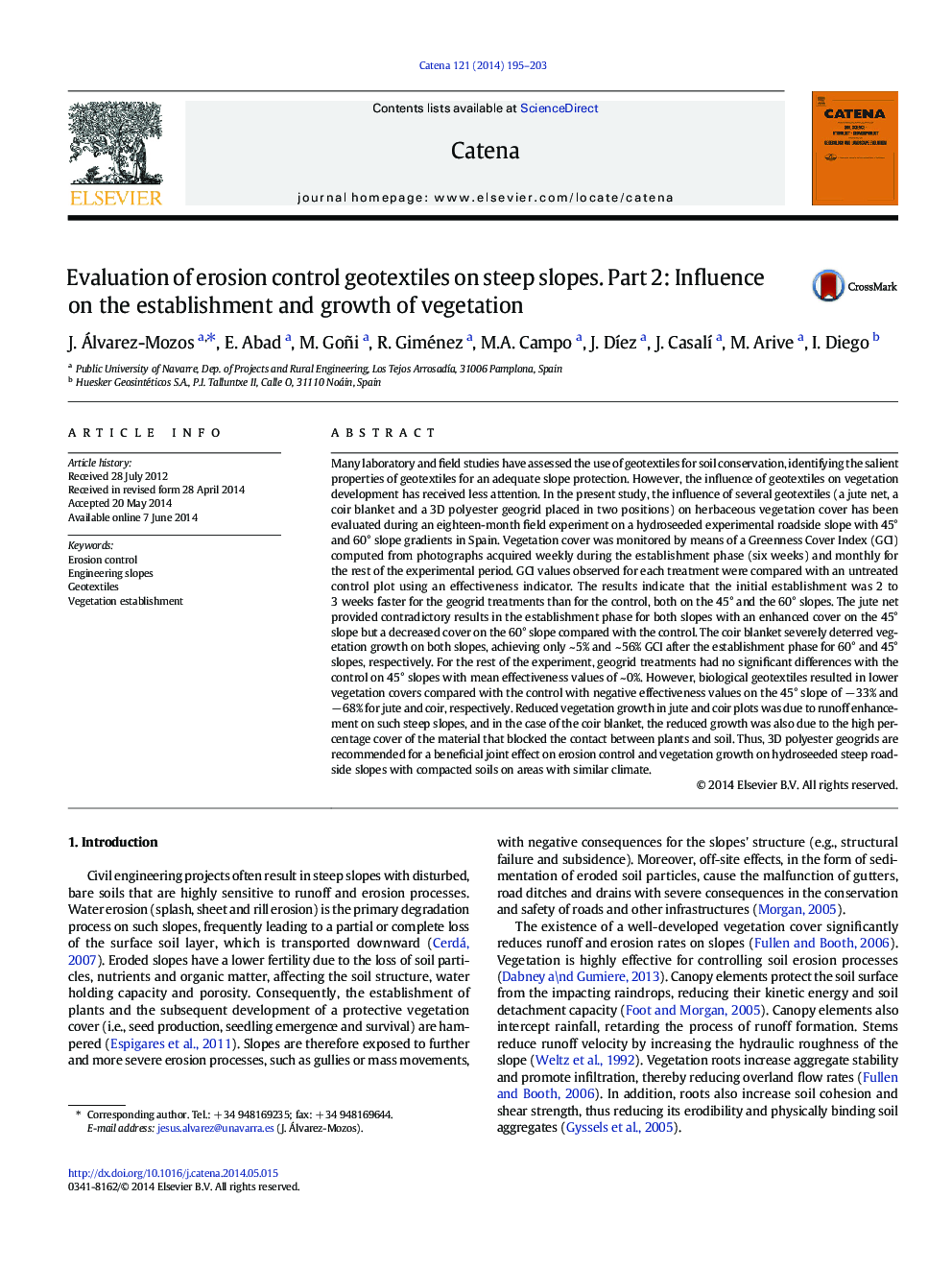| کد مقاله | کد نشریه | سال انتشار | مقاله انگلیسی | نسخه تمام متن |
|---|---|---|---|---|
| 4571315 | 1629231 | 2014 | 9 صفحه PDF | دانلود رایگان |
• Influence of geotextiles on vegetation growth is evaluated.
• Vegetation growth monitored using photographs and a Greenness Cover Index.
• Geotextiles with dense surface covers can deter vegetation establishment.
• A 3D synthetic geogrid performed the best in vegetation growth and erosion control.
Many laboratory and field studies have assessed the use of geotextiles for soil conservation, identifying the salient properties of geotextiles for an adequate slope protection. However, the influence of geotextiles on vegetation development has received less attention. In the present study, the influence of several geotextiles (a jute net, a coir blanket and a 3D polyester geogrid placed in two positions) on herbaceous vegetation cover has been evaluated during an eighteen-month field experiment on a hydroseeded experimental roadside slope with 45° and 60° slope gradients in Spain. Vegetation cover was monitored by means of a Greenness Cover Index (GCI) computed from photographs acquired weekly during the establishment phase (six weeks) and monthly for the rest of the experimental period. GCI values observed for each treatment were compared with an untreated control plot using an effectiveness indicator. The results indicate that the initial establishment was 2 to 3 weeks faster for the geogrid treatments than for the control, both on the 45° and the 60° slopes. The jute net provided contradictory results in the establishment phase for both slopes with an enhanced cover on the 45° slope but a decreased cover on the 60° slope compared with the control. The coir blanket severely deterred vegetation growth on both slopes, achieving only ~ 5% and ~ 56% GCI after the establishment phase for 60° and 45° slopes, respectively. For the rest of the experiment, geogrid treatments had no significant differences with the control on 45° slopes with mean effectiveness values of ~ 0%. However, biological geotextiles resulted in lower vegetation covers compared with the control with negative effectiveness values on the 45° slope of − 33% and − 68% for jute and coir, respectively. Reduced vegetation growth in jute and coir plots was due to runoff enhancement on such steep slopes, and in the case of the coir blanket, the reduced growth was also due to the high percentage cover of the material that blocked the contact between plants and soil. Thus, 3D polyester geogrids are recommended for a beneficial joint effect on erosion control and vegetation growth on hydroseeded steep roadside slopes with compacted soils on areas with similar climate.
Journal: CATENA - Volume 121, October 2014, Pages 195–203
